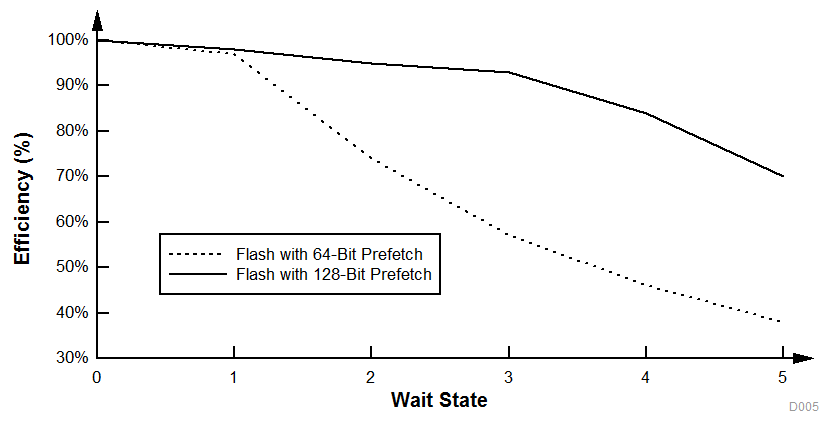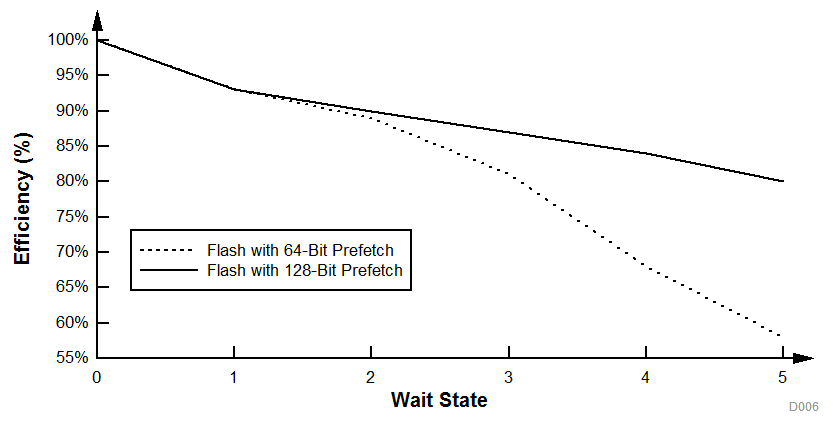SPRS945G January 2017 – January 2023 TMS320F280040-Q1 , TMS320F280040C-Q1 , TMS320F280041 , TMS320F280041-Q1 , TMS320F280041C , TMS320F280041C-Q1 , TMS320F280045 , TMS320F280048-Q1 , TMS320F280048C-Q1 , TMS320F280049 , TMS320F280049-Q1 , TMS320F280049C , TMS320F280049C-Q1
PRODUCTION DATA
- 1 Features
- 2 Applications
- 3 Description
- 4 Revision History
- 5 Device Comparison
- 6 Pin Configuration and Functions
-
7 Specifications
- 7.1 Absolute Maximum Ratings
- 7.2 ESD Ratings – Commercial
- 7.3 ESD Ratings – Automotive
- 7.4 Recommended Operating Conditions
- 7.5 Power Consumption Summary
- 7.6 Electrical Characteristics
- 7.7 Thermal Resistance Characteristics
- 7.8 Thermal Design Considerations
- 7.9
System
- 7.9.1
Power Management Module (PMM)
- 7.9.1.1 Introduction
- 7.9.1.2 Overview
- 7.9.1.3 External Components
- 7.9.1.4 Power Sequencing
- 7.9.1.5 Power Management Module Electrical Data and Timing
- 7.9.2 Reset Timing
- 7.9.3
Clock Specifications
- 7.9.3.1 Clock Sources
- 7.9.3.2 Clock Frequencies, Requirements, and Characteristics
- 7.9.3.3 Input Clocks and PLLs
- 7.9.3.4 Crystal (XTAL) Oscillator
- 7.9.3.5 Internal Oscillators
- 7.9.4 Flash Parameters
- 7.9.5 Emulation/JTAG
- 7.9.6 GPIO Electrical Data and Timing
- 7.9.7 Interrupts
- 7.9.8 Low-Power Modes
- 7.9.1
Power Management Module (PMM)
- 7.10 Analog Peripherals
- 7.11
Control Peripherals
- 7.11.1 Enhanced Capture (eCAP)
- 7.11.2 High-Resolution Capture Submodule (HRCAP6–HRCAP7)
- 7.11.3 Enhanced Pulse Width Modulator (ePWM)
- 7.11.4 High-Resolution Pulse Width Modulator (HRPWM)
- 7.11.5 Enhanced Quadrature Encoder Pulse (eQEP)
- 7.11.6 Sigma-Delta Filter Module (SDFM)
- 7.12
Communications Peripherals
- 7.12.1 Controller Area Network (CAN)
- 7.12.2 Inter-Integrated Circuit (I2C)
- 7.12.3 Power Management Bus (PMBus) Interface
- 7.12.4 Serial Communications Interface (SCI)
- 7.12.5 Serial Peripheral Interface (SPI)
- 7.12.6 Local Interconnect Network (LIN)
- 7.12.7 Fast Serial Interface (FSI)
-
8 Detailed Description
- 8.1 Overview
- 8.2 Functional Block Diagram
- 8.3 Memory
- 8.4 Identification
- 8.5 Bus Architecture – Peripheral Connectivity
- 8.6 C28x Processor
- 8.7 Control Law Accelerator (CLA)
- 8.8 Direct Memory Access (DMA)
- 8.9 Boot ROM and Peripheral Booting
- 8.10 Dual Code Security Module
- 8.11 Watchdog
- 8.12 Configurable Logic Block (CLB)
- 8.13 Functional Safety
- 9 Applications, Implementation, and Layout
- 10Device and Documentation Support
- 11Mechanical, Packaging, and Orderable Information
7.9.4 Flash Parameters
Table 7-9 lists the minimum required Flash wait states with different clock sources and frequencies.
| CPUCLK (MHz) | Flash Read, Execute, Program or Erase | Flash Bank/Pump in LPM OR Entering/Exiting LPM Active → Sleep → Active OR Active → Stdby → Active |
|---|---|---|
| 80 < CPUCLK ≤ 100 | 4 | 5 |
| 60 < CPUCLK ≤ 80 | 3 | 4 |
| 40 < CPUCLK ≤ 60 | 2 | 3 |
| 20 < CPUCLK ≤ 40 | 1 | 2 |
| 10 < CPUCLK ≤ 20 | 0 | 1 |
| CPUCLK ≤ 10 | 0 | 0 |
The F28004x devices have an improved 128-bit prefetch buffer that provides high flash code execution efficiency across wait states. Figure 7-24 and Figure 7-25 illustrate typical efficiency across wait-state settings compared to previous-generation devices with a 64-bit prefetch buffer. Wait-state execution efficiency with a prefetch buffer will depend on how many branches are present in application software. Two examples of linear code and if-then-else code are provided.
 Figure 7-24 Application Code With Heavy 32-Bit Floating-Point Math Instructions
Figure 7-24 Application Code With Heavy 32-Bit Floating-Point Math Instructions Figure 7-25 Application Code With 16-Bit If-Else Instructions
Figure 7-25 Application Code With 16-Bit If-Else InstructionsTable 7-10 lists the Flash parameters.
| PARAMETER | MIN | TYP | MAX | UNIT | |
|---|---|---|---|---|---|
| Program Time (1) | 128 data bits + 16 ECC bits | 150 | 300 | µs | |
| 8KB sector | 50 | 100 | ms | ||
| Erase Time (2) at < 25 W/E cycles | 8KB sector | 15 | 100 | ms | |
| Erase Time (2) at 1000 W/E cycles | 8KB sector | 25 | 350 | ms | |
| Erase Time (2) at 2000 W/E cycles | 8KB sector | 30 | 600 | ms | |
| Erase Time (2) at 20K W/E cycles | 8KB sector | 120 | 4000 | ms | |
| Nwec Write/Erase Cycles per sector | 20000 | cycles | |||
| Nwec Write/Erase Cycles for entire Flash (combined all sectors)(3) | 100000 | cycles | |||
| tretention Data retention duration at TJ = 85oC | 20 | years | |||
• Code that uses flash API to program the flash
• Flash API itself
• Flash data to be programmed
In other words, the time indicated in this table is applicable after all the required code/data is available in the device RAM, ready for
programming. The transfer time will significantly vary depending on the speed of the JTAG debug probe used.
Program time calculation is based on programming 144 bits at a time at the specified operating frequency. Program time includes
Program verify by the CPU. The program time does not degrade with write/erase (W/E) cycling, but the erase time does and hence Erase time is provided for 25 W/E cycles, 1K W/E cycles, 2K W/E cycles and 20K W/E cycles.
Erase time includes Erase verify by the CPU and does not involve any data transfer.
The Main Array flash programming must be aligned to 64-bit address boundaries and each 64-bit word may only be programmed once per write/erase cycle.
The DCSM OTP programming must be aligned to 128-bit address boundaries and each 128-bit word may only be programmed once. The exceptions are:
- The DCSM Zx-LINKPOINTER1 and Zx-LINKPOINTER2 values in the DCSM OTP should be programmed together, and may be programmed 1 bit at a time as required by the DCSM operation.
- The DCSM Zx-LINKPOINTER3 values in the DCSM OTP may be programmed 1 bit at a time on a 64-bit boundary to separate it from Zx-PSWDLOCK, which must only be programmed once.